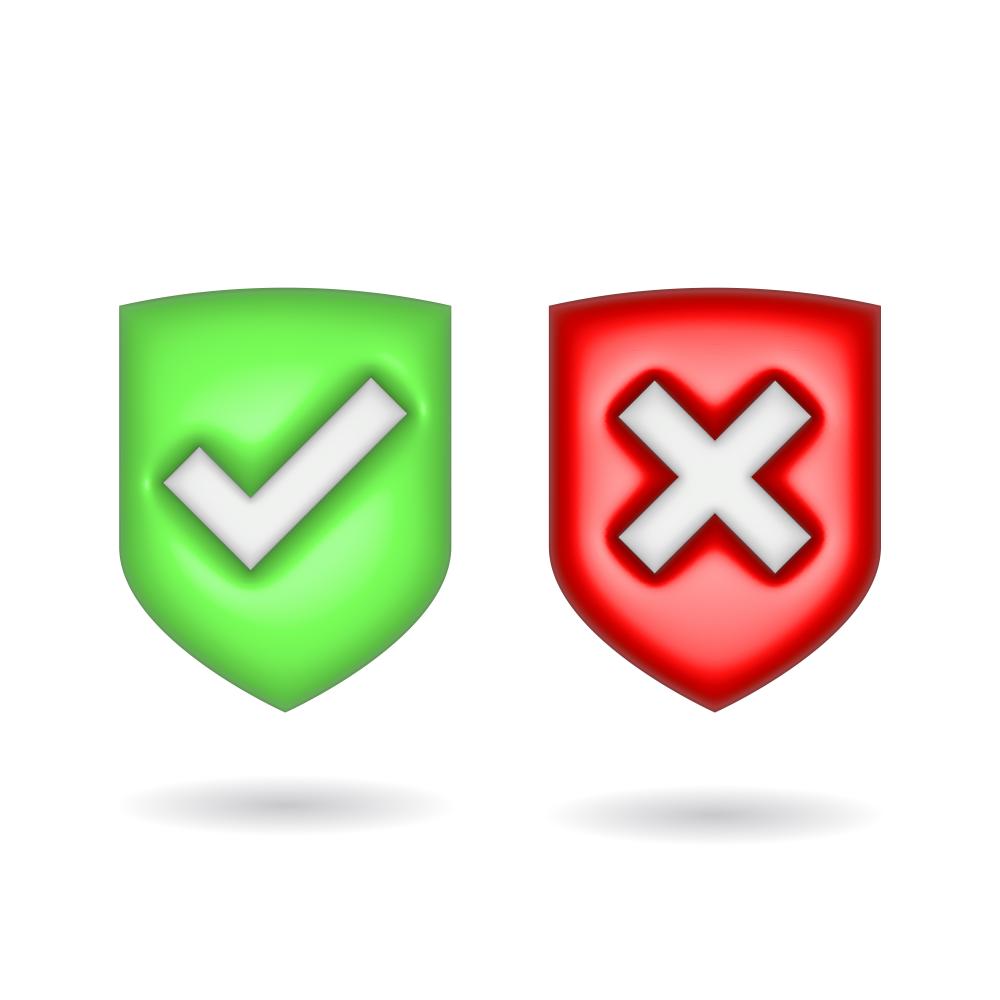What is Domain Rating?
Domain Rating (DR) is a vital metric crafted by Ahrefs, designed to assess the strength of a website's backlink profile on a scale from 0 to 100. As a professional with over two decades in the SEO industry, I've seen how a higher DR can signify a site's enhanced authority, often leading to better search visibility.
At Domain Rating IT, we emphasize that DR isn't just a number. It's reflective of both the quality and quantity of referring domains pointing to your website. It's essential to view DR as a tool to guide your SEO efforts rather than an end goal. As I often tell clients, think of DR as your digital reputation that evolves with consistent, quality link-building efforts.
How to Achieve Domain Rating Increase?
To accomplish a domain rating increase, it's crucial to focus on high-quality backlinks. Start by generating content that others will want to link to due to its relevance and value. Unlike in the past where sheer volume was king, modern SEO is all about quality. I've worked with countless businesses who underestimated the power of just a few links from highly authoritative sources.
Here's a proven approach to help with domain rating increase:
- Create insightful, unique content that serves your audience's needs.
- Engage in relationship building with industry influencers for potential collaborations.
- Utilize guest posting strategically, ensuring each post provides genuine value.
By adhering to these methods, you can anticipate a gradual increase in your domain rating, reflecting a healthier backlink profile.
Why Monitor Domain Rating Over Time?
Monitoring your domain rating over time is akin to checking your business's pulse. It reveals the ongoing impact of your SEO strategies and identifies areas that need attention. At Domain Rating IT, many clients have found that tracking DR trends helps in making informed decisions about link-building strategies.
For example, one e-commerce client found that correlating enhancements in their product pages' DR with sales data provided actionable insights into where marketing efforts should be concentrated. This, in turn, led to a more pronounced domain rating increase.
How Does DR Differ from Other Metrics?
While Domain Rating from Ahrefs is often compared to Moz's Domain Authority, the two serve different purposes. DR focuses specifically on the strength of a website's backlink profile, while DA takes a broader approach. It's crucial for professionals to understand how these metrics influence SEO outcomes.
From my experience, DR is particularly useful for identifying sites with potential high authority value. It's a direct reflection of how viable your site is in the web's ever-expanding ecosystem, guiding you towards achieving that coveted domain rating increase.
How Can I Improve My DR Efficiently?
Improving your Domain Rating efficiently involves strategic planning and execution. Let's focus on a streamlined process:
- Identify relevant keywords and optimize your content around them.
- Analyze competitors' backlinks and pinpoint opportunities.
- Implement internal linking to boost the authority of key pages.
This technique not only facilitates domain rating increase but also leverages existing resources for maximum output. Remember, the key is consistency and patience; the digital landscape rewards those who are methodical and persistent in their efforts.
For SEO professionals and business owners, a domain rating free checker is a vital tool. By instantly assessing the authority of a website, you can make more informed decisions about potential link-building opportunities. With 20 years in the industry, I've seen how strategic use of domain rating free checker tools can significantly enhance your site's credibility and organic search visibility. These tools are essential for those looking to maximize their site's performance without the need for costly subscriptions.
Utilizing a domain rating free checker allows you to compare the strength of your domain against competitors. This comparison not only aids in identifying areas for improvement but also helps in strategizing link-building efforts. At Domain Rating IT, we prioritize providing an easy-to-use, accurate checker that gives immediate results, without unnecessary frills.
What Is Domain Rating?
Domain Rating (DR), developed by Ahrefs, is a metric that gauges the strength of a website's backlink profile on a scale from 0 to 100. The higher the DR, the more authoritative the site. Unlike Domain Authority (DA) from Moz, DR focuses primarily on the quantity and quality of referring domains. This approach gives a clearer picture of a site's potential influence in search engine rankings. At Domain Rating IT, our tools leverage this metric to provide users with actionable insights and advanced analysis options.
DR is particularly useful when assessing the competitive landscape. Knowing how your domain compares to others in the industry can be invaluable for developing effective SEO strategies. By focusing on improving the DR, you're essentially strengthening your backlink profile, which, based on implied correlations with search rankings, has a direct impact on your site's visibility.
Our platform not only offers a domain rating free checker but also provides educational resources and insights into optimizing your DR effectively. This ensures users are not only aware of their current standing but are equipped with the knowledge to enhance it.
How to Enhance Your Domain Rating
Improving your domain rating involves more than just obtaining backlinks; it requires strategic link-building and content optimization. Here's a step-by-step guide to elevate your DR:
- Focus on Quality: Acquire backlinks from reputable and topically relevant sites.
- Content Creation: Develop engaging content that naturally attracts backlinks.
- Analyze Competitors: Use tools to reverse engineer successful backlink strategies.
- Monitor Changes: Regularly check your DR and adjust strategies as needed.
While these steps are straightforward, the execution requires diligence and continual adaptation to ensure sustained growth in DR. With the free tools provided by Domain Rating IT, you can track these changes effortlessly.
What are Common Questions About Domain Rating Free Checker?
When it comes to utilizing a domain rating free checker, several questions frequently arise:
- How accurate are free checkers? Most free checkers, especially those by established platforms, provide reliable insights similar to their paid counterparts.
- Why do DR scores fluctuate? Changes in your backlink profile, including new links or loss of existing ones, can affect DR scores.
- Can a free checker cover all my needs? While comprehensive, some advanced features might require subscription-based tools for in-depth analysis.
Having these questions answered helps alleviate concerns and assists users in effectively incorporating domain rating checkers into their SEO strategies.
How to Choose the Best Domain Rating Free Checker?
Finding the right domain rating free checker can be a game-changer for your SEO strategy. Here's what to look for:
First, accuracy is paramount. Ensure the tool provides data that aligns closely with leading industry metrics like those from Ahrefs. Next, consider the user experience. A tool that is easy to use and doesn't require unnecessary steps can save you time and frustration. Finally, feature set matters. Tools that offer additional insights, such as historical trends and competitor comparisons, give you a fuller picture of your domain's authority.
At Domain Rating IT, our domain rating free checker stands out by offering a comprehensive yet straightforward interface that caters to both novices and seasoned professionals. Investing in such a tool equips you with the insights needed to dominate search engine results.
What is Domain Rating (DR)?
Domain Rating, or DR, is a metric developed by Ahrefs to assess the strength of a website's backlink profile on a scale from 0 to 100. As an SEO professional with over 20 years of experience, I can tell you that a higher DR typically indicates a stronger and more authoritative website. This is crucial for SEO because it reflects the quality and quantity of external domains linking back to your site.
When considering domain rating meaning, it's essential to understand that DR is not a static number. It changes as new backlinks are acquired and as other websites increase or decrease their own backlinks. This dynamic nature makes tracking DR a valuable tool for assessing your site's evolving SEO landscape. Unlike Domain Authority (DA) by Moz, DR places a stronger emphasis on the number and quality of unique referring domains.
Why is a Better Domain Rating Important?
Understanding the domain rating meaning is critical for digital marketers aiming to boost their website's online presence. A higher DR can lead to better search engine rankings, which in turn increases organic traffic. These improvements can translate into higher visibility and greater authority in your industry.
For business owners, a robust domain rating can enhance credibility with potential clients and partners. It reflects a well-established online entity with strong connections, making it an essential metric to consider in competitive sectors.
Besides, a good DR also signals to search engines like Google that your site is trustworthy and authoritative, which can result in better indexing and ranking. Thus, by focusing on improving DR, you not only enhance your SEO metrics but also foster long-term success for your digital presence.
How Can I Improve Domain Rating Effectively?
For anyone wondering about domain rating meaning improvements, here are some actionable steps to enhance your site's DR:
- Acquire high-quality backlinks from authoritative websites. Focus on quality over quantity to boost your DR effectively.
- Engage in strategic guest posting. Share insightful content on reputable platforms to earn valuable backlinks.
- Monitor your backlink profile regularly to identify and disavow any toxic links that might harm your DR.
- Leverage internal linking to distribute link equity across your website's pages, enhancing both DR and user experience.
Can Domain Rating Change Over Time?
Domain rating meaning reveals that it is not a static measure but one that evolves. As I've observed through my career, a website's DR can fluctuate, often in response to changes in the competitive landscape or shifts in backlink quality and quantity. It's common for businesses to see DR variations due to gaining or losing backlinks or when competitors strengthen their backlink profiles.
By consistently acquiring high-quality links and maintaining your site's technical SEO health, you can positively influence your DR over time. Regular tracking and adaptation to changes in backlink profiles are key to maintaining a stable and potentially growing DR.
- Regular updates to your site's content can help maintain relevance.
- Analyzing competitors' DR can offer insights into strategies for your own improvements.
- Being proactive with link-building campaigns can help anticipate DR changes.
What Affects Domain Rating?
Several factors account for the domain rating meaning:
The primary influences on DR include the number of unique domains linking back to your site and the authority of those domains. Additionally, the "link juice" passed from these sites plays a significant role. A high-authority site linking to your domain can considerably boost your DR.
It's crucial to assess not only the number but also the quality of backlinks. Toxic or spammy links can negatively impact your DR and overall SEO health. Therefore, regular audits of your backlink profile can help maintain a healthy DR.
How can I effectively increase my Domain Rating?
Improving your Domain Rating (DR) takes a strategic approach focusing on quality over quantity. Think of your website's DR as a reflection of its reputation in the digital world, akin to how word-of-mouth impacts a business in the real world. The key is to build high-quality backlinks from authoritative domains. For example, engaging in collaborative content projects with reputable sites or becoming a guest contributor on high-traffic blogs can be incredibly effective.
A practical tip is to perform a competitive analysis to understand where your industry counterparts are gaining their backlinks. Sound daunting? It doesn't have to be. Tools like our Domain Rating checker can help you easily gauge your competitors' strengths and find opportunities for improvement.
Think of it this way: every quality backlink is like getting a positive review from a trusted source. Focus on creating valuable content that naturally earns these 'reviews', and you'll notice your DR climbing over time. Have you ever experienced a boost in your DR from a particular strategy? I'd love to hear about it!
Why is it important to monitor my Domain Rating over time?
Your Domain Rating is dynamic; it changes as your site's backlink profile evolves. Monitoring it over time is like keeping track of your business's health. It allows you to see the impact of your SEO efforts and adapt your strategies as needed.
Imagine you're running a marketing campaign to boost your site's authority. By tracking your DR, you can assess whether your strategies are paying off or if adjustments are needed. It's particularly satisfying to see those DR numbers rise after implementing a new campaign!
Another compelling reason is to stay ahead of competitors. If you notice a dip in your DR while your competitor's is rising, it's a signal to analyze and strategize accordingly. Are you actively monitoring your DR, and has it influenced your SEO decisions?
What common misconceptions exist about Domain Rating?
One widespread misconception is that Domain Rating is just a vanity metric with little impact on real-world outcomes. However, DR is a valuable tool, indicating the strength of a site's backlink profile, which can significantly influence search engine rankings and visibility.
Another myth is that DR changes overnight with just a few tweaks. While a single high-quality backlink can boost DR, consistent efforts over time are necessary for substantial improvements. Patience and persistence are crucial.
Lastly, some believe that any backlink will do, but quality always trumps quantity. Secure links from reputable sources to truly enhance your DR. Reflect on your current understanding of DR--does it align with these insights or challenge your previous beliefs?
How do free Domain Rating checkers benefit SEO strategy?
Free Domain Rating checkers are invaluable for both budding and seasoned SEO professionals. They provide an instant snapshot of your site's authority without the need for costly tools, enabling you to make informed decisions quickly.
With these tools, you can compare your DR to that of competitors, spot trends, and identify opportunities for improvement. This is especially useful for small businesses or startups where budget constraints limit access to premium tools.
Moreover, free checkers can help demystify SEO metrics, making them accessible even to non-experts. If you're skeptical about the accuracy of free tools, try comparing results from multiple checkers to see how they align. Would you consider incorporating a free checker into your workflow?
Do Domain Rating and Domain Authority mean the same thing?
Domain Rating (DR) and Domain Authority (DA) are often used interchangeably, but they have distinct differences. DR, developed by Ahrefs, focuses specifically on the strength of a site's backlink profile, whereas DA, by Moz, considers a broader range of factors, including the overall SEO health of a website.
In practical terms, DR is a snapshot of your site's influence based on links, while DA provides a more holistic view of SEO potential. Understanding the nuances between the two can help you tailor your SEO strategy more effectively.
Knowing which metric aligns with your goals is essential--DR can be more insightful for link-building campaigns, while DA might be better for comprehensive SEO evaluations. Have you found one metric more useful than the other in your experience?


